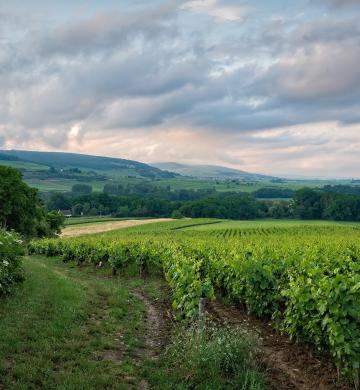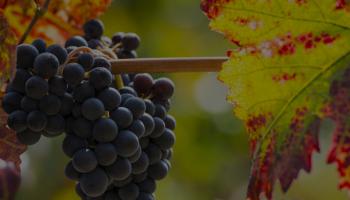
Burgundy Wine: a simple guide
As well as this, the cities and towns are surrounded by the most beautiful European countryside, with sprawling fields and rolling hills. Traveling throughout these areas you’ll also notice an abundance of vineyards dotting the landscape. Wineries and historic vineyards are commonplace throughout this region and many wine lovers will know the importance of Burgundy for the production of great wines and stellar vintages.
History Of Wine In Burgund
As with many things across Europe, wine was brought to the Burgundy region by the Roman Empire, growing vineyards that could have helped to keep their soldiers and citizens well-stocked and their morale high. Over the many years, French monasteries were gifted vineyards in Burgundy, who then went on to produce some of the greatest wines throughout history. For hundreds of years, Burgundy wine was predominantly created by these monks of the Catholic church, and while it was mainly used to celebrate mass, it was perfected over the years and deemed good enough to start selling, with much of the profits used to improve the grounds and structures of the vineyards and monasteries.
Burgundy Wine Makers And Vineyards
Today, this region is famed for some of the world’s most amazing wines, both red and white. These wines are created with great care and respect and are well known for their quality and great flavor. This area is perfect for growing wine due to the combination of great climate, altitude, soil composition. Many of the top 10 Burgundy wines feature in worldwide lists and win awards due to their quality and enjoyability. There are many fine wineries around Burgundy, discover them with Burgundy Emotions personalised guided tours including visits and wine tastings. Enjoy a wonderful experience meeting the passionate winemakers at the heart of the world famous Burgundy wines.
Typical Burgundy Wine
There are many types of wines that you can find throughout France, and this is no different in Burgundy. However, it’s worth noting that the two dominant types of Burgundy wine that you’ll find from Burgundy are Pinot Noir and Chardonnay. Bourgogne wine is mainly created using these two types of grape, and they are arguably some of the most popular varieties of wine across the planet. Yet while these are the most common types, there are also some vineyards that produce other varieties, which we’ll cover below.
Aligoté
This grape was recorded for the first-ever time in Burgundy itself and is still planted there, almost exclusively. It was discovered in the 1900s and benefits from the south-eastern facing slopes and pleasant climate of Burgundy. This is a difficult grape to grow, and the inexperienced vintner can produce some truly awful wine. However, with care and consideration, a great grower and winemaker can turn this grape into a simply marvelous Burgundy wine with notes of citrus and nuts. There are some great experiences around Burgundy and beyond, provided by La Vallée de la Gastronomie - France ®, where you can tour vineyards and wineries, sampling the best and most intriguing wines to come out of France.
Gamay
While related to the Pinot Noir, this grape is still used to this day to create some truly spectacular wines with a significantly different taste and aroma. The fragrance these wines offer tend to be similar to that of red and black fruits, and some even provide a natural, wild scent like forest undergrowth. To taste, they are packed full of flavor, and one that is left to mature can be very smooth on the tongue. There is a huge amount of versatility when it comes to pairing this burgundy wine with food, making it a great all-rounder. It works just as well with roasted beef or chicken as it does with hors d'oeuvres, and offering a glass of this gorgeous wine to your guests will likely go down a treat.
Pinot Gris
This white wine grape gets its name from the grayish-blue hue that the fruit tends to have. While it can vary in color, they generally boast this beautiful appearance as an alleged mutation between both Pinot Noir and Pinot Blanc, although it’s not entirely proven to be the case. A burgundy wine made using this grape is said to provide a hint of spice and even tropical fruit. Younger fruits tend to have a much more acidic taste to them, so it’s generally better for a vintner to allow the fruit to mature and ripen a bit before use. As with many white wines, these are far superior when paired with seafood or delicate poultry and vegetable dishes. Lighter food choices are best here to allow the wine to shine, although, for the more full-bodied bottles of Bourgogne wine, they can happily go alongside a richer dish, including heartier meats like beef and lamb if you so desire.
Sauvignon Blanc
Perfect for lazy summer afternoons and evenings, wines made using the prestigious Sauvignon Blanc grape and incredibly light and fresh. These white wines have become so popular over the years that the grape has migrated to other countries around the world, as far as Argentina, yet France will forever remain the perfect home for this grape due to the perfect climate and soil. Expert vintners like those at Villa Baulieu have created some truly magnificent bottles containing a mixture of Sauvignon Blanc grapes and others such as the Rolle for a complex and divine taste.
A Perfect Companion
When considering food to go along with a bottle of great wine, you’re unlikely to think of anything else, especially in France, than a good cheese. The top 10 burgundy wines of the year are, of course, created with the utmost care and respect, combined with countless years of knowledge, trial and error. And the same can be said for the cheeses that this region is famed for. When choosing a great cheese for a bottle of Pinot Noir, it’s said that creamy yet mild cheeses like Brillat-Savarin and Chaource are excellent choices. Whereas, if you’re supplying a white such as Chardonnay, you may want to choose the classic Burgundy Comté or Mont d’Or cheeses for a blast of rich flavor.

